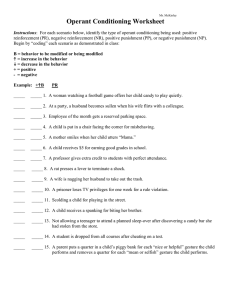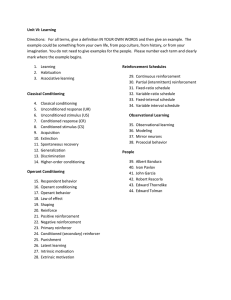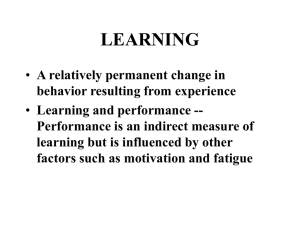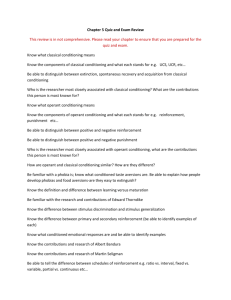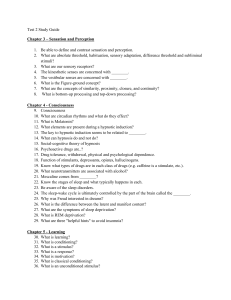Psychology Learning Objectives: Conditioning & Social Behavior
advertisement
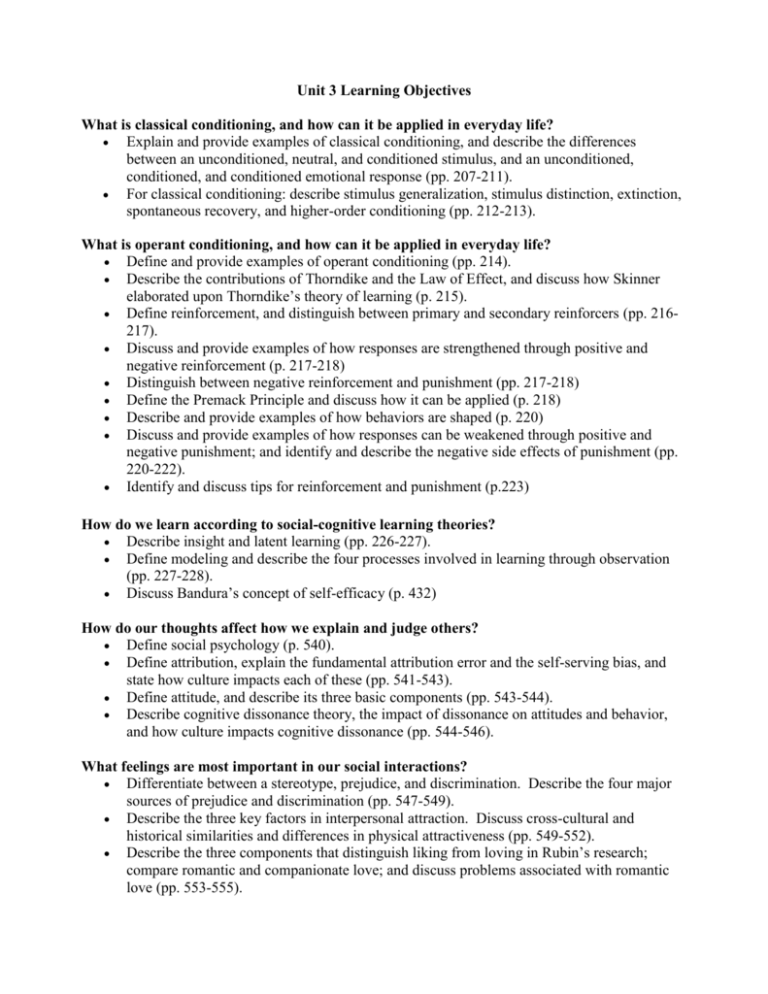
Unit 3 Learning Objectives What is classical conditioning, and how can it be applied in everyday life? Explain and provide examples of classical conditioning, and describe the differences between an unconditioned, neutral, and conditioned stimulus, and an unconditioned, conditioned, and conditioned emotional response (pp. 207-211). For classical conditioning: describe stimulus generalization, stimulus distinction, extinction, spontaneous recovery, and higher-order conditioning (pp. 212-213). What is operant conditioning, and how can it be applied in everyday life? Define and provide examples of operant conditioning (pp. 214). Describe the contributions of Thorndike and the Law of Effect, and discuss how Skinner elaborated upon Thorndike’s theory of learning (p. 215). Define reinforcement, and distinguish between primary and secondary reinforcers (pp. 216217). Discuss and provide examples of how responses are strengthened through positive and negative reinforcement (p. 217-218) Distinguish between negative reinforcement and punishment (pp. 217-218) Define the Premack Principle and discuss how it can be applied (p. 218) Describe and provide examples of how behaviors are shaped (p. 220) Discuss and provide examples of how responses can be weakened through positive and negative punishment; and identify and describe the negative side effects of punishment (pp. 220-222). Identify and discuss tips for reinforcement and punishment (p.223) How do we learn according to social-cognitive learning theories? Describe insight and latent learning (pp. 226-227). Define modeling and describe the four processes involved in learning through observation (pp. 227-228). Discuss Bandura’s concept of self-efficacy (p. 432) How do our thoughts affect how we explain and judge others? Define social psychology (p. 540). Define attribution, explain the fundamental attribution error and the self-serving bias, and state how culture impacts each of these (pp. 541-543). Define attitude, and describe its three basic components (pp. 543-544). Describe cognitive dissonance theory, the impact of dissonance on attitudes and behavior, and how culture impacts cognitive dissonance (pp. 544-546). What feelings are most important in our social interactions? Differentiate between a stereotype, prejudice, and discrimination. Describe the four major sources of prejudice and discrimination (pp. 547-549). Describe the three key factors in interpersonal attraction. Discuss cross-cultural and historical similarities and differences in physical attractiveness (pp. 549-552). Describe the three components that distinguish liking from loving in Rubin’s research; compare romantic and companionate love; and discuss problems associated with romantic love (pp. 553-555). How do our actions toward others affect their lives and our own? Define conformity, and explain the three factors that contribute to this behavior (pp.556-558). Define obedience, and describe how Milgram’s classic studies demonstrated the effect of authority, responsibility, graduations in requests, and disobedient models on obedience (pp. 558-561). Define roles and describe their effect on the behavior of “prisoners” and “guards” in Zimbardo’s classic prison study (pp. 562-563). Discuss how group polarization and groupthink affect group decision making (pp. 564-565).



